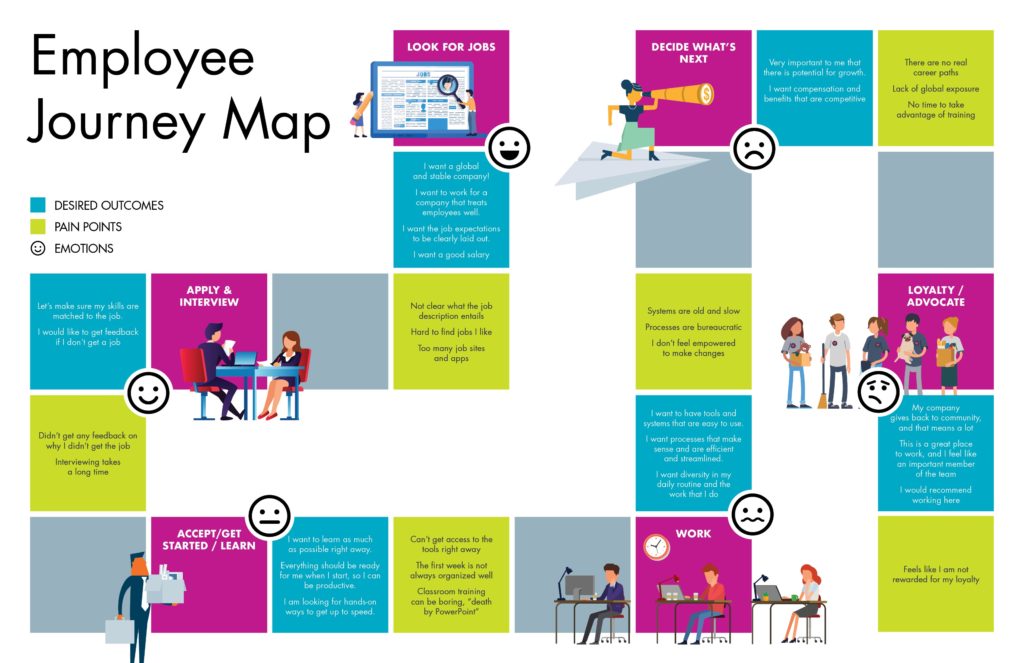Mapping the Employee Journey

This is a follow on to my employee experience blog post where I shared how we approach employee experience. We also recommend taking inputs from your employee experience efforts and creating an employee journey map. Much like a customer journey map an employee journey map allows you to capture the end-to-end journey in one place.
What is an employee journey map?
An employee journey map is a tool used to identify opportunities to improve employee experience. Journey maps visually outline the end-to-end experience and show all of the possible touchpoints an employee has within their experience. The map is from the employee’s viewpoint and shows what the employee is doing, thinking, feeling, and saying across their interactions within their experience from start to finish.
Why create an employee journey map?
Employee journey maps allow you to:
- Gain an in-depth understanding of interactions and pain points from the employee’s point of view.
- Expose gaps between employee expectations and perceptions.
- Create a better experience for employees by leveraging findings in the journey map.
The life of a journey map
Journey maps are used as tools to make improvements and they are living documents. As the improvements are made the maps change over time. You can design current state maps, but you can also design future state maps – which would reflect what employees want their journey to look like.
Creating your journey map framework
Journey maps should be catered to the specific type of company, industry and employee. There are generic phases to an employee journey (much like a customer journey) that we have included in our sample map below. You should customize the journey phases and the phase names based on how your employees view the journey. You should also customize the categories of information that will make the map useful to your company – goals, challenges, and touchpoints are pretty standard on journey maps, but you can include things like level of effort, satisfaction, highs/lows, opportunities, etc. depending on how your team will use the maps. The idea is to make them actionable.
Here’s an example of a simple employee journey map that shows the employee journey from when they first look for a job to ongoing loyalty and advocacy.

Reach out if you have questions or want to learn more!
Sara Dougherty
sara@clearworks.net
Share this blog post: